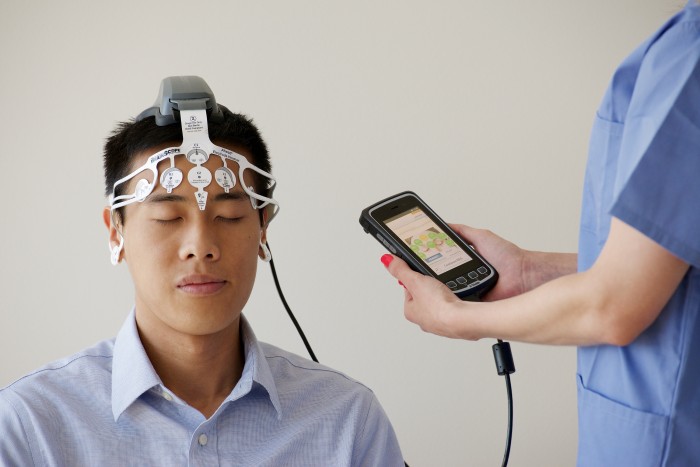
Whitman will be the first high school to participate in a study from BrainScope Co. Inc., a company that examines efficient ways to detect traumatic brain injuries.
The Bethesda-based neurotechnology company will test machinery that can help doctors confirm concussions shortly after they’re suffered and indicate the severity of the injury, according to BrainScope CEO Michael Singer.
“The data will be used to develop a medical device to help clinicians objectively assess whether a patient has been concussed, thereby improving early identification and optimization of treatment,” Singer said.
The goal of the research is to ultimately make the device into a handheld tool that can be paired with sensors. Because the technology is predicated on near-immediate results, it would theoretically be used to determine the health of an athlete within the same game the athlete gets injured.
“The focus of these studies is to develop a device that could be used during a game to help clinicians determine whether a player can return to play and also to help the clinician objectively address whether the patient should seek further medical care thereafter,” Singer said.
While there are current treatments for concussions, they’re all based on identifying the patient’s clinical symptoms. BrainScope’s device would differ in that it directly scans the brain movement of the athlete.
Observing the electrical activity of a patient’s brain is a more objective way to assess changes over time following a head injury, Singer said.
BrainScope has already completed 20 studies on the technology, and is currently conducting similar experiments at colleges around the country, with the same objective of effectively diagnosing concussions.
As the dangers of mistreating concussions evolve, as evident in a report from Boston University which found degenerative brain damage in 96 percent of football players observed, it is important to be able to protect young athletes from these injuries, athletic director Andy Wetzel said.
“Concussions are an issue anywhere there are athletics,” he said. “Any chance to make athletics safer for our student athletes is a good thing.”
The study is open to all students ages 13–19 who play Whitman sports and have suffered a concussion, and athletes must meet certain criteria, as well as receive parental approval, to participate. In a Whitnet email, principal Alan Goodwin explained that athletes are eligible if they weren’t hospitalized for more than 24 hours for their injury, didn’t lose consciousness for over 20 minutes as a result of their injury, and showed no visible brain abnormalities on CT scans.
Students who qualify may be subject to MRI scanning within 72 hours of the injury, balance and neurocognitive testing and an electroencephalogram (EEG) which measures the electrical activity of the brain.
While the study will be conducted throughout the rest of the school year, it will take around a year for results to come back, Goodwin said.
But data may not be the only product of the experiment: the study could lead to more opportunities to teach students and parents about the dangers of traumatic head injuries.
“Perhaps there will be a lot of education associated with this,” Goodwin said, “[with] some extra sessions in the evenings where more experts would talk so that the Whitman community is very well informed about the problems associated with concussions.”
The device is still in its developmental stage, and has yet to go through the necessary clinical validation and processes for clearance by the FDA. It will most likely be available between 2017 and 2018, Singer said.
More important than the profit from this study is the awareness it brings to the pressing problem of concussions, Singer said.
“We hope that this research study can raise awareness of a major health issue in sports today,” Singer said.





